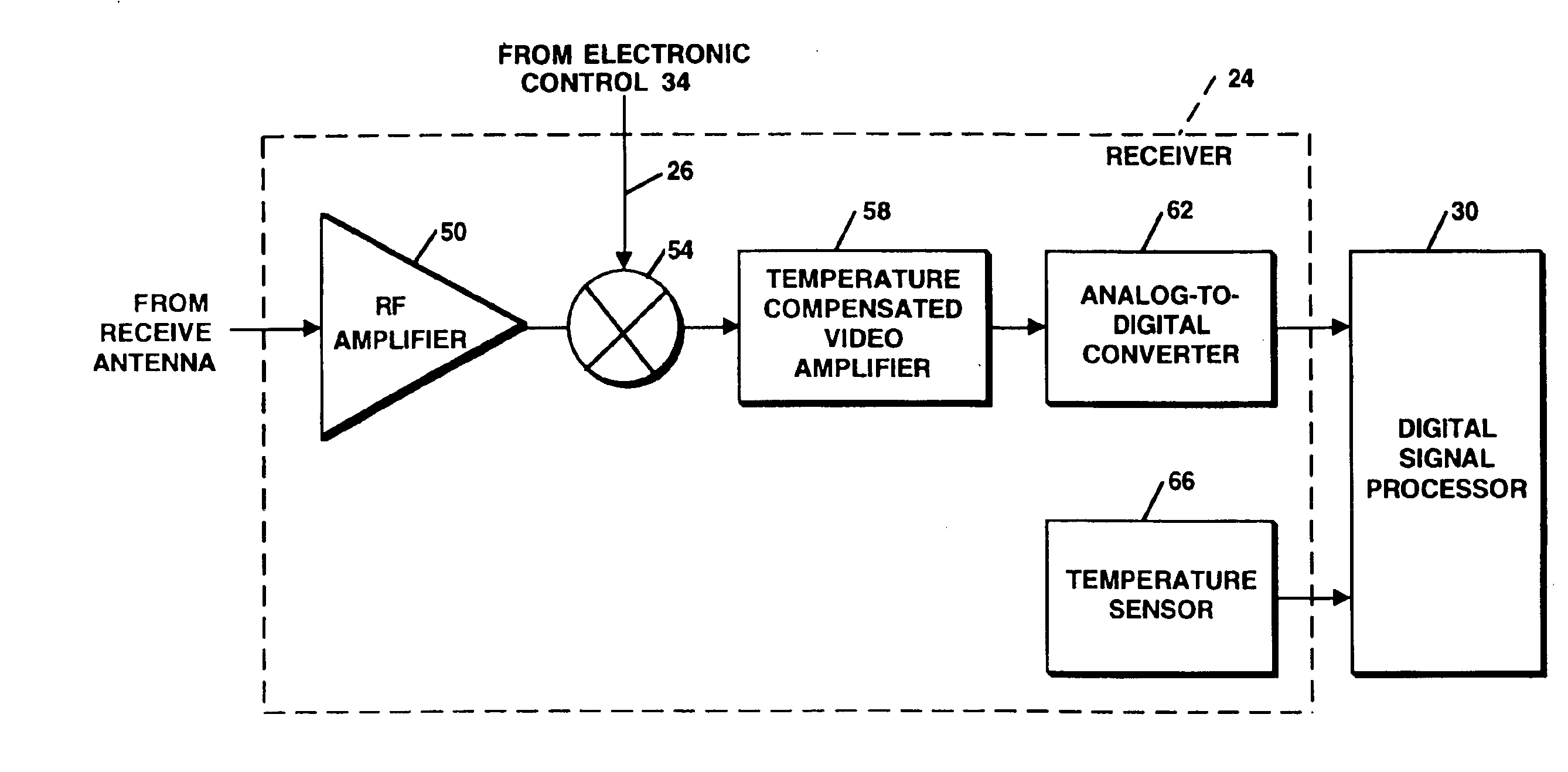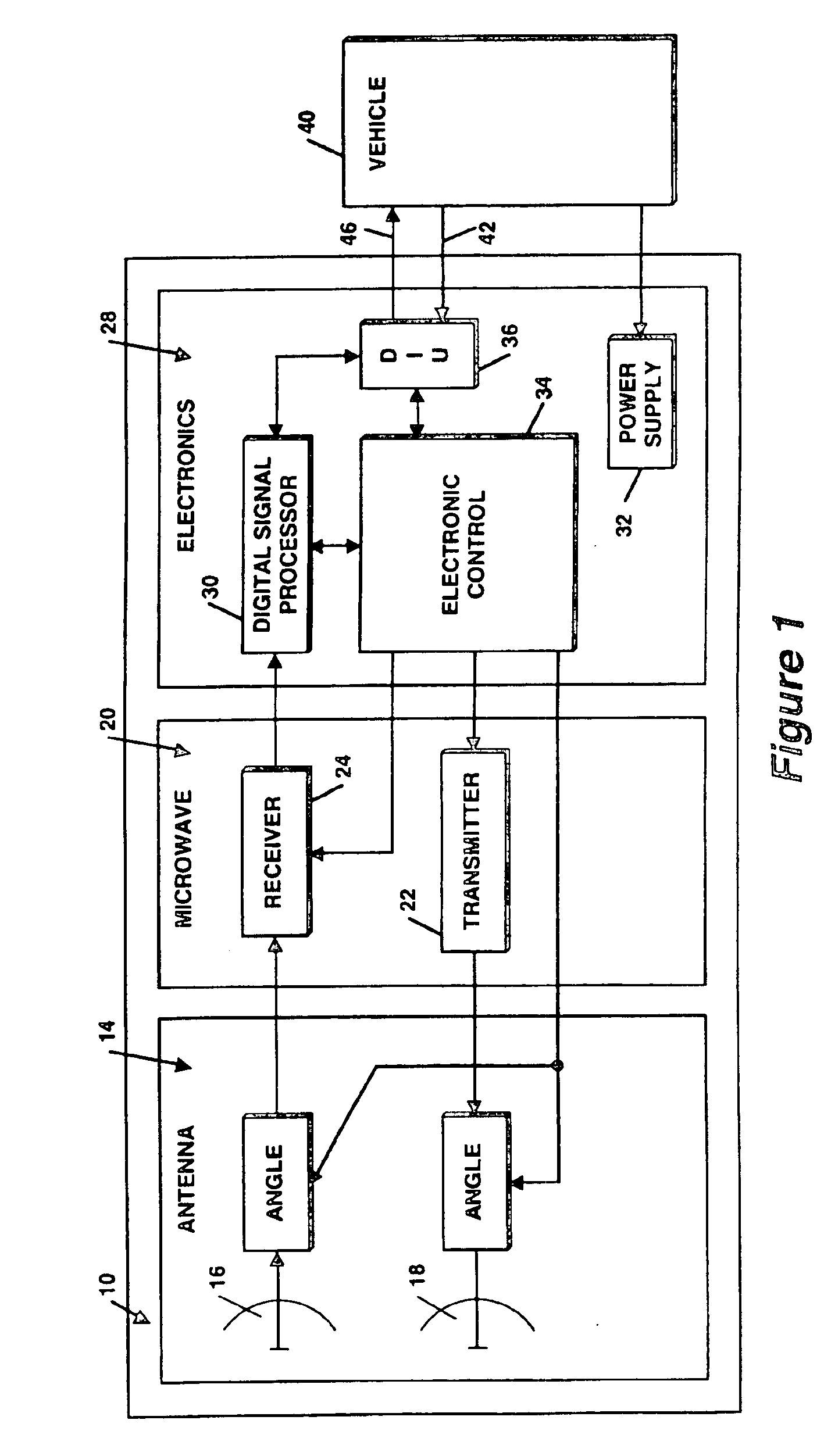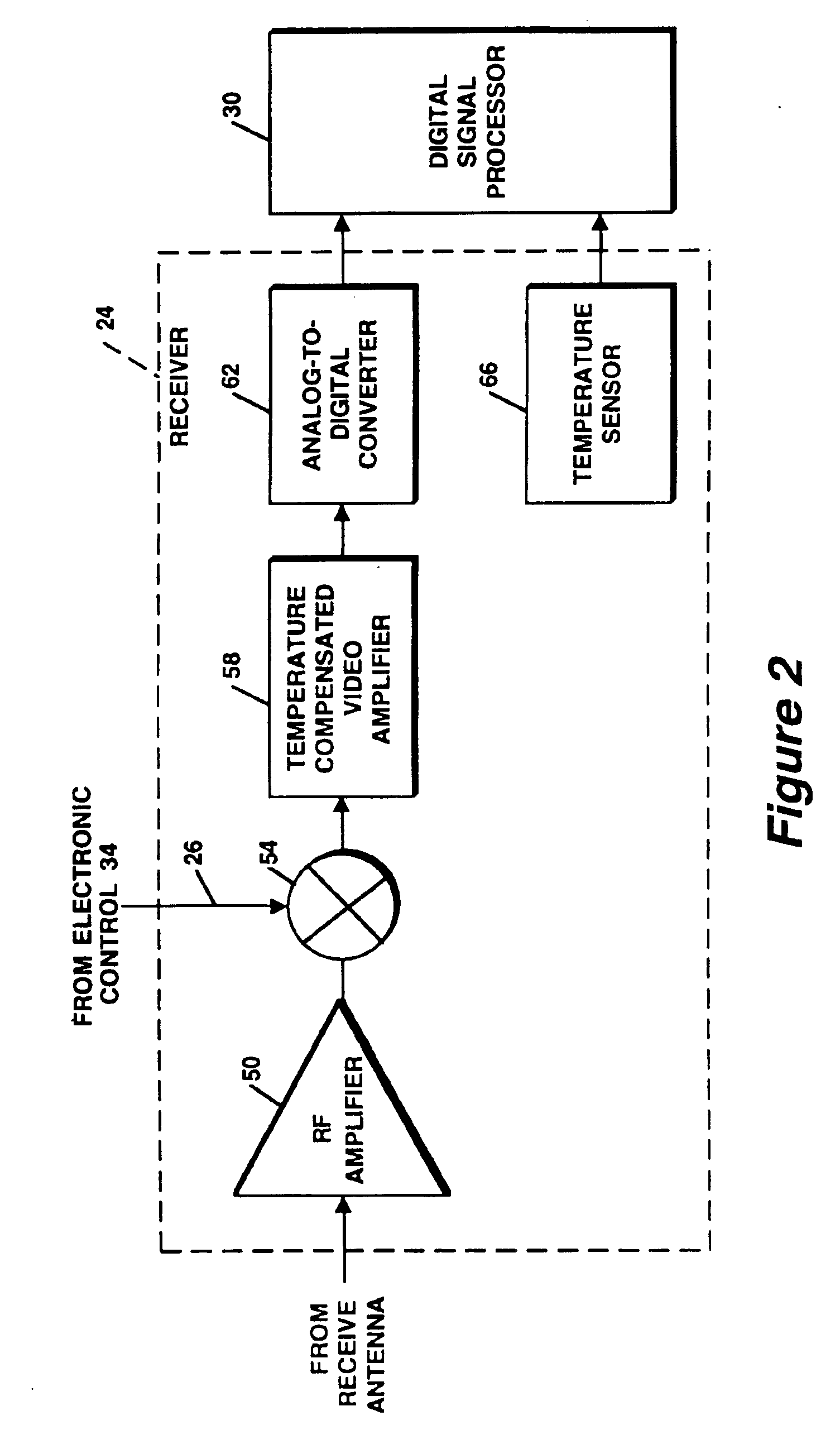Video amplifier for a radar receiver
a video amplifier and radar receiver technology, applied in the field of radar systems, can solve the problems of affecting the dynamic range of the receiver, affecting the design of the receiver, and the pin diode is relatively expensive, so as to reduce the effect of leakage signals, reduce aliasing, and eliminate temperature-induced gain variations
- Summary
- Abstract
- Description
- Claims
- Application Information
AI Technical Summary
Benefits of technology
Problems solved by technology
Method used
Image
Examples
Embodiment Construction
[0021]Referring to FIG. 1, a radar system 10 includes an antenna portion 14, a microwave portion 20 having both a transmitter 22 and a receiver 24, and an electronic portion 28, consisting of a digital signal processor (DSP) 30, power supplies 32, control circuits 34 and a digital interface unit 36. According to the invention, the receiver 24 includes a temperature compensated video amplifier 58 (FIG. 2).
[0022]The radar system 10 utilizes radar technology to detect one or more objects, or targets in the field of view of the system and may be used in various applications. In the illustrative example, the radar system 10 is a module of an automotive radar system (FIG. 7), such as a Side Object Detection (SOD) module or system, adapted for mounting on an automobile 40 for the purpose of detecting objects, such as other vehicles, trees, signs, pedestrians, etc. As will become apparent to those of ordinary skill in the art, the video amplifier contained in the receiver according to the p...
PUM
 Login to View More
Login to View More Abstract
Description
Claims
Application Information
 Login to View More
Login to View More - R&D
- Intellectual Property
- Life Sciences
- Materials
- Tech Scout
- Unparalleled Data Quality
- Higher Quality Content
- 60% Fewer Hallucinations
Browse by: Latest US Patents, China's latest patents, Technical Efficacy Thesaurus, Application Domain, Technology Topic, Popular Technical Reports.
© 2025 PatSnap. All rights reserved.Legal|Privacy policy|Modern Slavery Act Transparency Statement|Sitemap|About US| Contact US: help@patsnap.com



